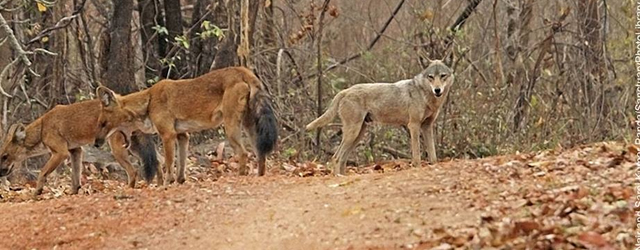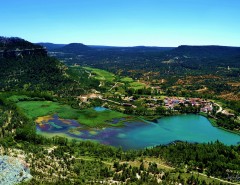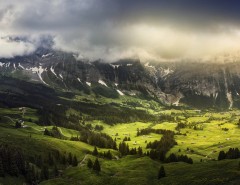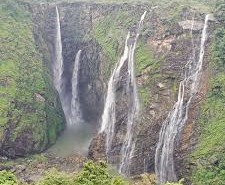Jambughoda is a Wildlife Sanctuary situated in Jambughoda Tehsil, in the South Central part of Gujarat, India. It located 70 km from Vadodara and 20 km from prominent tourist places such as Pawagadh and Champaner.
Jambughoda Wildlife Sanctuary
Located in the Panchmahal district of Central Gujarat and 130.38 km2. area declared as a sanctuary in May 1990, Jambughoda Wildlife Sanctuary is home for a variety of animals and plants. A small part of the sanctuary (Targol Round) falls in the adjoining Vadodara district. It’s a magnificent forest of teak, bamboos and other miscellaneous species. The area has two water reservoirs- one at Kada and the other at Targol. These water bodies add to the aesthetic settings and habitat diversity. Leopard is the top predator here whose population has been increasing. The habitat is shared by other animals such as sloth bear, jackal, blue bull, wild boar and four horned antelopes.
The area has also many varieties of reptiles as well, which include many venomous and non-venomous snakes. The area was a part of the princely state of Jambughoda prior to independence. The most striking feature of the area is the undulating hills having good forest cover with the valleys having small human settlements. The interesting places are Kada, Targol and Jhand Hanuman temple. The most picturesque location is Kada where a beautiful forest rest house stands on the banks of an irrigation reservoir. Kada happens to be a wonderful camping site as well. Due to its location close to a cosmopolitan city of Vadodara, the sanctuary is an ideal resort for city people and very good camping site for nature campers.
Flora
Jambughoda Wildlife Sanctuary Sag, sadad, shisham, khair, mahuda, bamboos, timru, bor, dhav, bili, dudhalo etc.
Fauna
Wildlife is considerably rich. Leopard is the big cat existing here, whereas jungle cat is the lesser cat. Among the other carnivores hyena, wolf and jackal should be considered. Barking deer, four horned antelope, bluebull and wild boar are the ungulates occurring in the Sanctuary. Besides civets, mongoose, porcupine and several species of rodent are also found in the area. Sloth bear is occasionally reported from the area. Python, crocodile and other herpetofauna also exist here. Birdlife is plentiful. In the past, junglefowl was abundant here, but the species is now exterminated from the area or has become rare. The wildlife depends on two water reservoirs constructed in the Sanctuary for satisfying the need of water.
People of the area are mainly tribal. There are 25 villages (including 5 villages inside the Sanctuary) which are distributed among five forest blocks and two ranges. Local tribals collect minor forest produce from the area for their livelihood. People also allow grazing of their livestock and cut wood in the forest.
Status of management of the PA is good, but needs to be improved by taking up habitat steps, so that animals can be provisioned with adequate food, water and shelter. Population of herbivores is scanty, which in turn compels the leopard to enter the villages in search of alternative domestic prey. Grazing and wood removed by local people and fire in the forest cause damage to the habitat. Local people encroach upon the land of the PA and hence the area needs to be re-demarcated.
- Country – India
- State – Gujarat
- District – Panchmahal
- Area – 542.08
- Nearest city – Vadodara
- Established – 7 August, 1989




